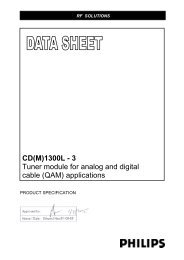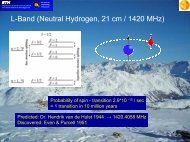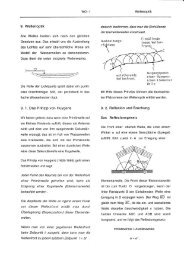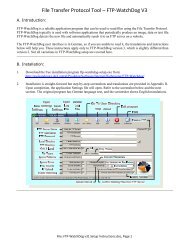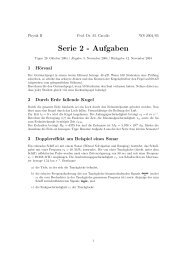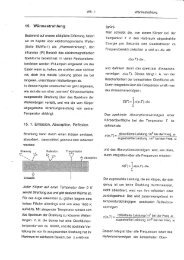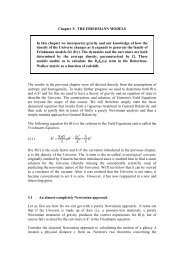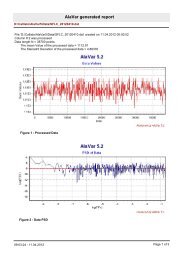here - Institute for Astronomy Umleitung
here - Institute for Astronomy Umleitung
here - Institute for Astronomy Umleitung
You also want an ePaper? Increase the reach of your titles
YUMPU automatically turns print PDFs into web optimized ePapers that Google loves.
Title: Science Case<br />
Reference: MUSE-MEM-SCI-052<br />
Issue: 1.3<br />
Date: 04/02/2004<br />
Page: 9/100<br />
integrate 4 times longer 2 because it does not have the AO unit. We could only observe<br />
continuum-selected objects, of which only 25% have sufficiently strong Ly α . Hence we would<br />
find 75–250 Ly α objects in 320 hours of integration time, 0.2–0.8 galaxy per hour, more than<br />
a factor of 10 lower. Hereafter, we will use a more refined model of galaxy <strong>for</strong>mation which<br />
gives more conservative results (N(>f)∝f -1.7 ) below 1.5 10 -17 ergs.s -1 cm -2 . According to this<br />
model, MUSE will detect 300 objects in an 80-hour integration, which is in the low end of the<br />
above-mentioned estimate. VIMOS would also detect fewer objects. Hence these comparisons<br />
are fairly independent of the details of the galaxy population.<br />
At the time when MUSE comes on the VLT, 8-10 m class telescopes will have been in<br />
operation <strong>for</strong> 15 years. Hence the "quick-and-easy" projects will have been done already, and<br />
the telescopes will have to be operated in a new way to push the frontier. W<strong>here</strong>as the largest<br />
survey being carried out now takes on the order of 50 nights, programs of even larger size will<br />
be more typical by 2011. Hence we should think in programs which can be done in many<br />
100's of hours of integration time, not 100 hours 3 .<br />
In the following we discuss the science in the field of galaxy <strong>for</strong>mation that can be done with<br />
MUSE in 1000 hours 4 . This is not meant to be exhaustive, nor meant to be a claim by the<br />
MUSE team that they reserve the right to do this all by themselves. It shows applications of<br />
MUSE, whether done by the MUSE team, or the community. The survey is a staggered<br />
survey using different depths and area coverage. It uses exclusively the WFM and AO<br />
capabilities, except <strong>for</strong> the shallow survey which does not require AO. It consists of:<br />
• Shallow survey (SF), reaching a flux density of 5. 10 -18 erg.s -1 .cm -2 , and an area coverage<br />
of 200 arcmin 2 .<br />
• Medium deep survey (MDF), reaching a flux density of 1.1 10 -18 erg.s -1 .cm -2 , and an<br />
area coverage of 40 arcmin 2 .<br />
• Deep survey (DF), reaching a flux density of 3.9 10 -19 erg.s -1 .cm -2 , and an area coverage<br />
of 3 arcmin 2<br />
• Ultra deep survey (UDF), reaching a flux density of 1.3 10 -19 erg.s -1 .cm -2 <strong>for</strong> 0.6 arcmin 2 ,<br />
using lensing clusters.<br />
These numbers are chosen based on our current knowledge and simulations. It is likely that<br />
the strategy will evolve with time. With the above-mentioned estimates based on current<br />
surveys, it is <strong>for</strong>eseen that MUSE will have detected more than about 15,000 2.8




